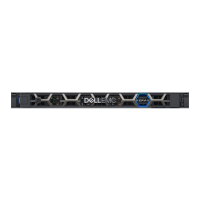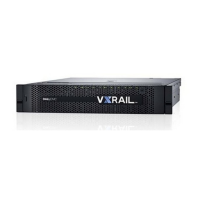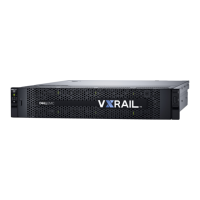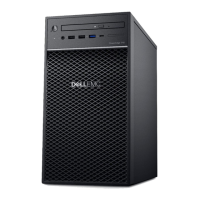15 | Network Planning Guide
© 2018 Dell Inc. or its subsidiaries
• The virtualization team needs to assign the VLAN IDs to the individual VxRail logical networks.
VxRail groups the logical networks in the following categories: External Management, Internal Management, vSAN, vSphere
vMotion, and Virtual Machine. VxRail will assign the settings you specify for each of these logical networks during the
initialization process.
Before VxRail version 4.7, both external and internal
management traffic shared the external management
network. Starting with version 4.7 of VxRail, the external
and internal management networks are broken out into
separate networks.
External Management traffic includes all VxRail Manager,
vCenter Server, and ESXi communications. The external
management VLAN also carries traffic for vRealize Log
Insight. All VxRail external management traffic is untagged
by default, and should be able to go over a Native VLAN on
your top-of-rack switches. If this path is not accessible, you
will not be able to build VxRail and configure the ESXi hosts
without performing customizations first.
There are two methods that allow you to tag external
management traffic:
1. Configure each VxRail port on your switch to tag the
management traffic and route it to the desired VLAN.
2. Alternately, you can configure a custom management VLAN
to allow tagged management traffic after you power on each
node, but before you run VxRail initialization. Your Dell EMC
service representative will take care of this during installation.
The Internal Management network is used solely for
device discovery by VxRail Manager during initial
implementation and node expansion. This network traffic is
non-routable, and is isolated to the network switches
connected to the VxRail nodes. Powered-on VxRail nodes
advertise themselves on the Internal Management network
using IPV6 multicast, which is required on this network, and discovered by VxRail Manager. The default VLAN of 3939 is configured
on each VxRail node shipped from the factory. If a different VLAN value is used for this network, then the new VLAN must be
applied to each VxRail node on-site, or device discovery will fail.
In VxRail Appliances, vSphere vMotion and vSAN traffic cannot be routed, and is isolated with the VxRail cluster. This traffic will
be tagged for the VLANs you specify in VxRail initialization.
The Virtual Machine network(s) are for the virtual machines running your applications and services. Dedicated VLANs are
preferred to divide Virtual Machine traffic, based on business and operational objectives. VxRail will create one or more VM
Networks for you, based on the name and VLAN ID pairs that you specify. Then, when you create VMs in vSphere Web Client to run
your applications and services, you can easily assign the virtual machine to the VM Network(s) of your choice. For example, you
could have one VLAN for Development, one for Production, and one for Staging.

